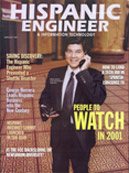Paul Edward Gray, an engineer and educator whose vision and leadership have advanced engineering education and practice around the world, is being honored by IEEE with the 2010 IEEE Founders Medal. IEEE is the worldís largest professional association advancing technology for humanity.
The medal, sponsored by the IEEE Foundation, recognizes Gray for an exemplary career of leadership in education, research and public policy. The medal will be presented on 26 June 2010 at the IEEE Honors Ceremony in Montreal, Quebec, Canada, and will be broadcast live on the Web through IEEE.tv (www.ieee.tv).
An award-winning teacher and expert in semiconductor electronics, Grayís innovative approaches to engineering education continue to impact the discipline, never losing site of the student and influencing generations of engineering leaders. While serving at the Massachusetts Institute of Technology (MIT), Cambridge, Mass., in positions ranging from instructor, to dean, to president, Gray emphasized continual innovation in undergraduate education.
He supported programs that engaged students in faculty research projects and promoted stronger ties between academia and industry. He championed increased opportunities for women and minorities, and he was a strong believer in providing financial assistance to students in need. He also led efforts to promote open intellectual exchange with countries such as Japan, and he used his influence to lobby for increasing the publicís grasp of science and technology.
To better prepare engineering students for leadership and management roles, Gray was a strong proponent of expanding undergraduate engineering education beyond the traditional core science subjects.
He encouraged the leaders of the management and engineering schools to work with industrial leaders to create the MIT Leaders for Manufacturing Program to produce graduates with both engineering and leadership abilities. The program has been widely copied. He was also an advocate of MITís Project Athena, which was an early effort to improve undergraduate education by incorporating distributed computing. The project led to many aspects of desktop computing that are common today.
Gray believes that integrating research into the classroom can motivate and excite students. He appointed the leader who created MITís Undergraduate Research Opportunities Program (UROP) and strongly supported its development. UROP allowed students to join active faculty research groups to apply their classroom learning and be exposed to real-world problem solving and decision making. Today, over 80% of MITís undergraduates participate in the program, and it has served as a model for other universities worldwide.
Gray served four years on the White House Science Council and as a member on the Council's Panel on the Health of Universities. During his tenure as MIT president during the 1980s, Gray was very active in Washington, D.C., as an advocate of engineering , science and research universities.
When the United States was struggling with competition from Japan, Gray continued to press the case for open intellectual exchange at a time when the U.S. Congress thought that such foreign relationships were putting the country at a disadvantage. His continued efforts in cultivating strong relationships with Japan eventually gained the attention and respect of U.S. industries and government.
An IEEE Fellow, Gray is also a Fellow of the American Academy of Arts and Sciences and a member of the U.S. National Academy of Engineering. His awards include the Rodney D. Chipp Memorial Award from the Society of Women Engineers and the Grand Cordon of the Order of the Sacred Treasure from the emperor of Japan.
An MIT ďlifer,Ē Gray joined the institution in 1957 as an instructor in electrical engineering and would later hold the positions of associate provost, dean of engineering, chancellor, president and chair of MIT Corporation (MITís board of trustees). Gray received his bachelorís, masterís, and doctorate degrees from MIT, all in electrical engineering. He is a Professor of Electrical Engineering Emeritus and President Emeritus at MIT.

